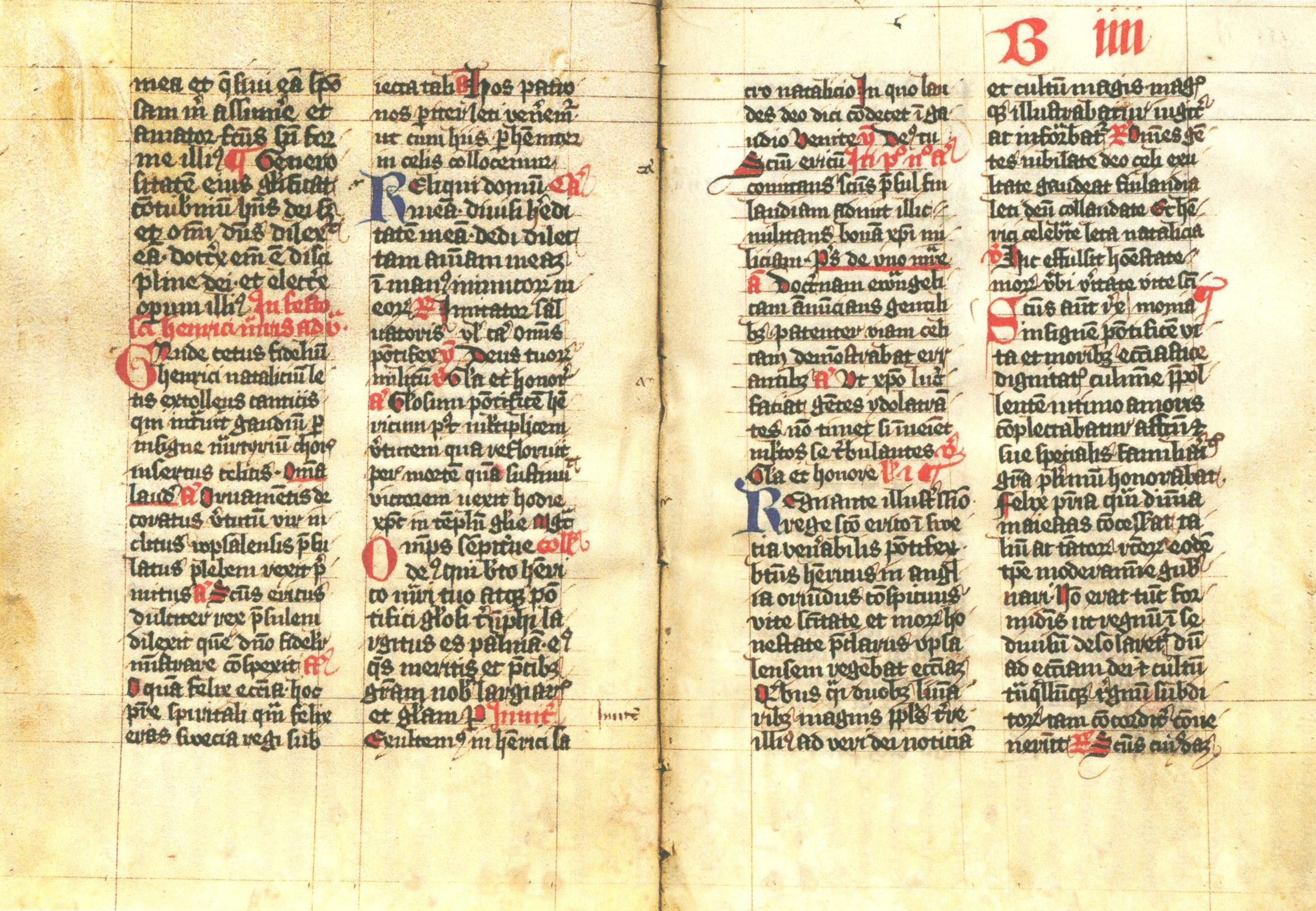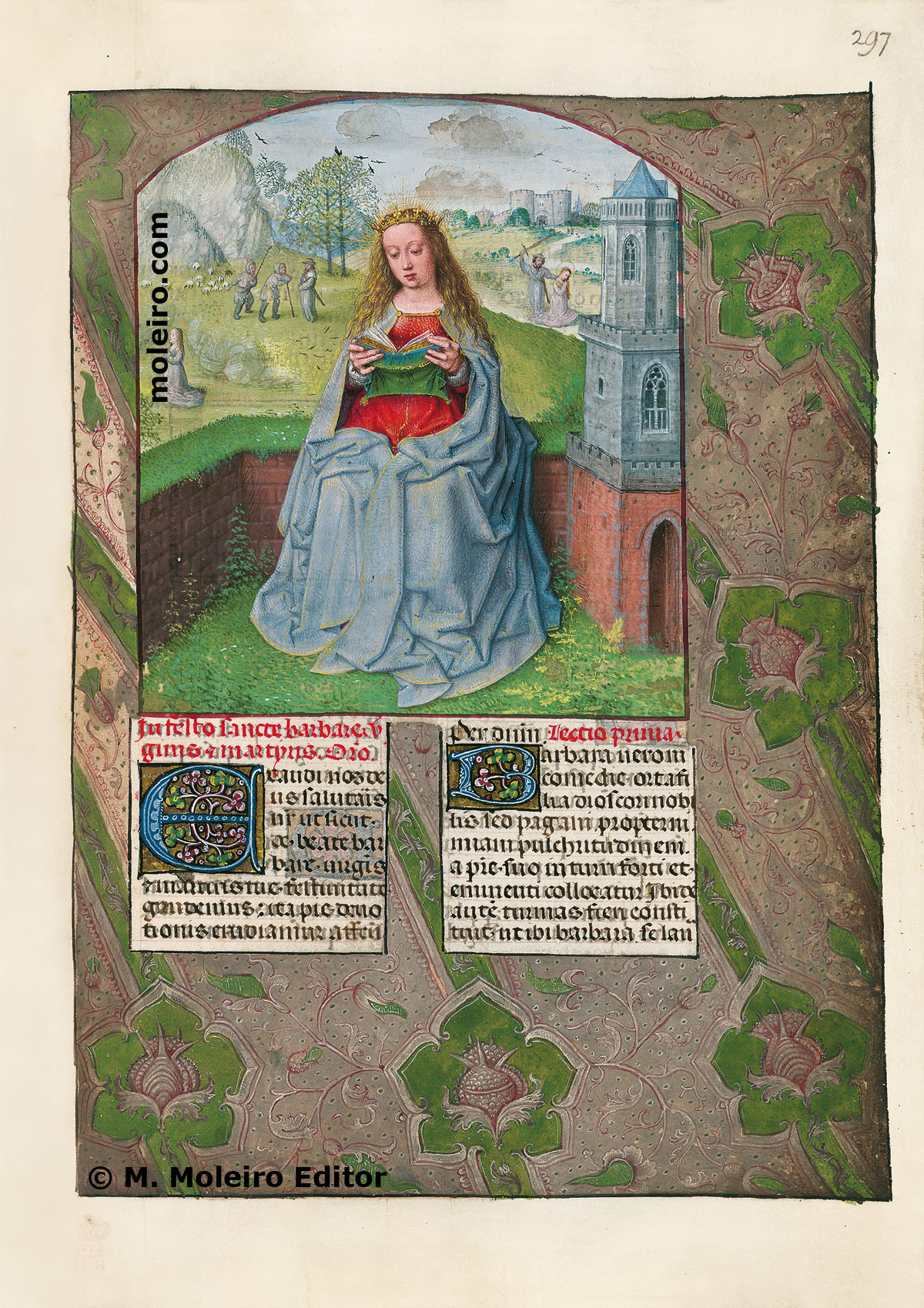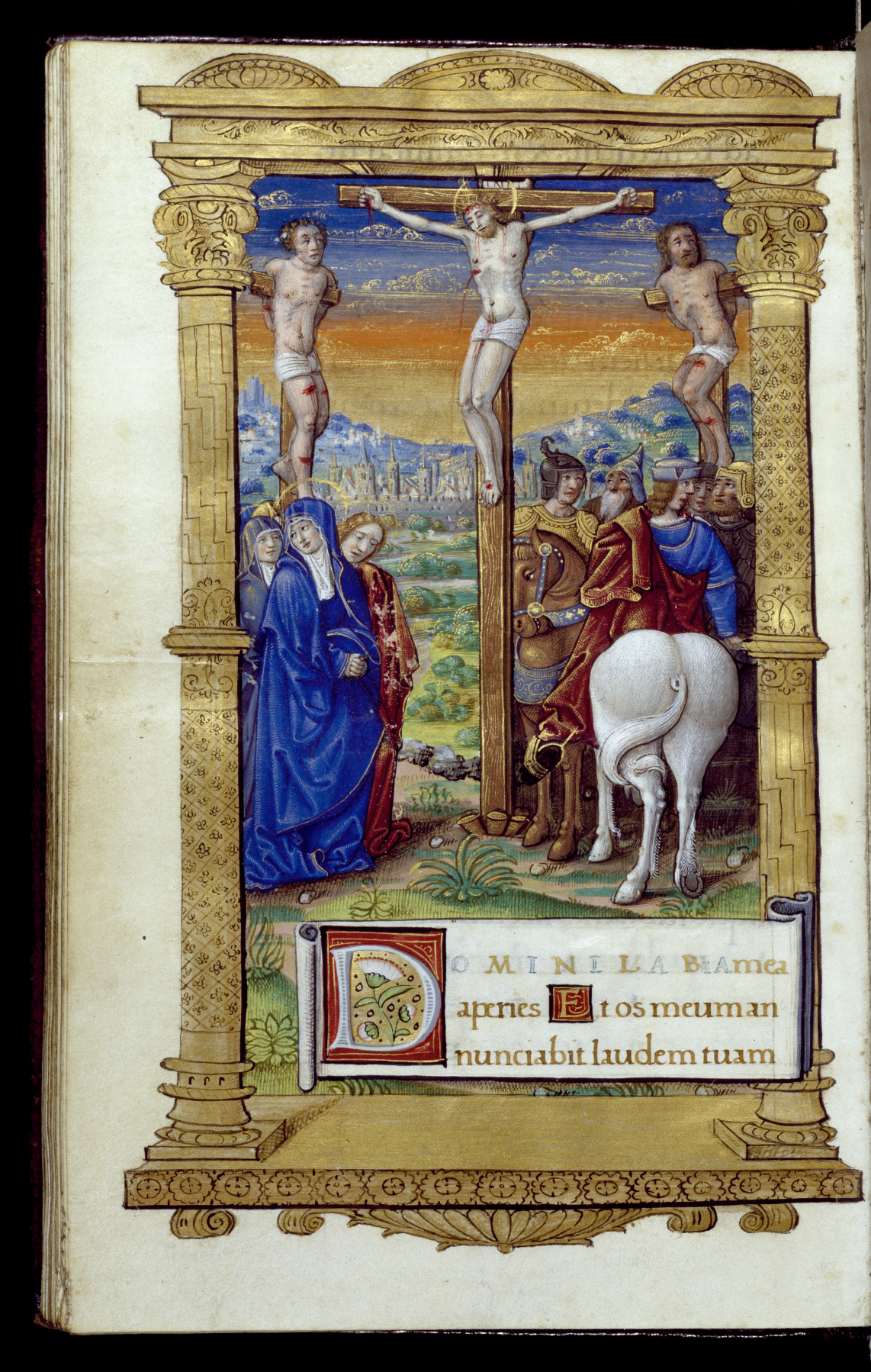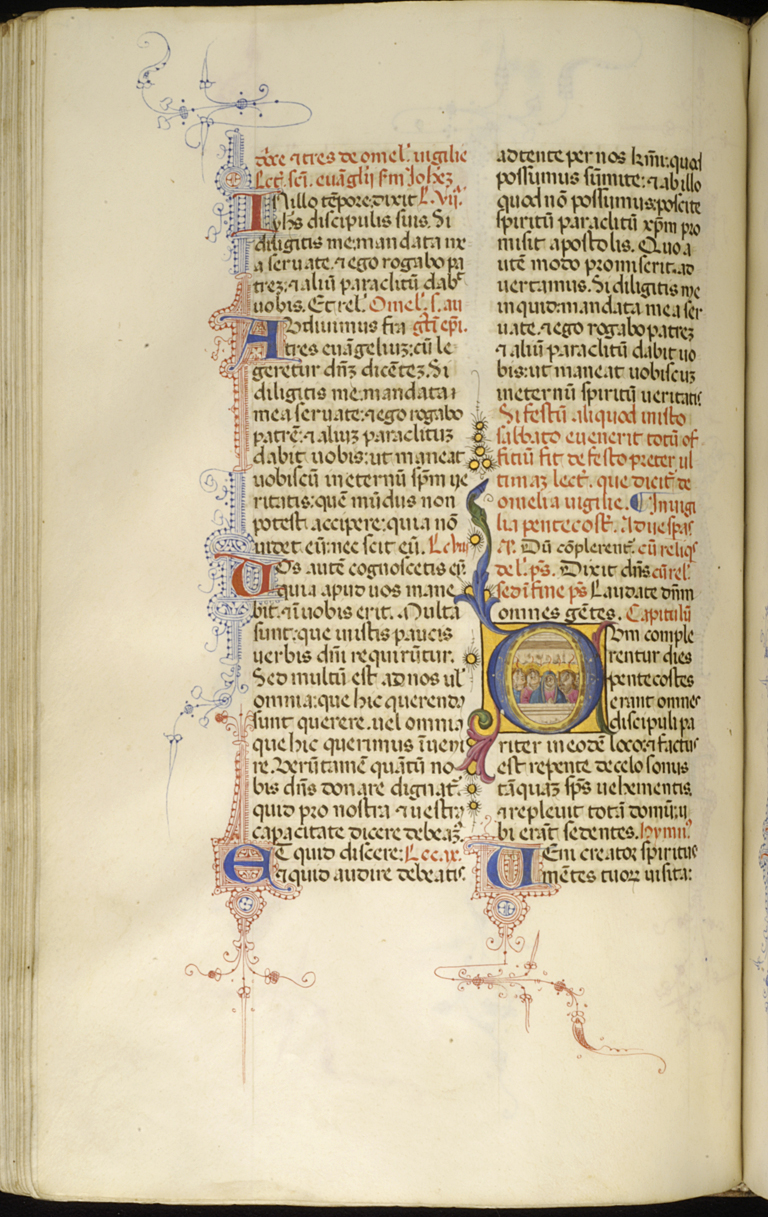|
Breviary
A breviary () is a liturgical book used in Christianity for praying the canonical hours, usually recited at seven fixed prayer times. Historically, different breviaries were used in the various parts of Christendom, such as Aberdeen Breviary, Belleville Breviary, Stowe Breviary and Isabella Breviary, although eventually the Roman Breviary became the standard within the Roman Catholic Church (though it was later supplanted with the Liturgy of the Hours); in other Christian denominations such as the Lutheran Churches, different breviaries continue to be used, such as The Brotherhood Prayer Book. Different breviaries The "contents of the breviary, in their essential parts, are derived from the early ages of Christianity", consisting of psalms, Scripture lessons, writings of the Church Fathers, as well as hymns and prayers. From the time of the early Church, the practice of seven fixed prayer times, being attached to , have been taught; in '' Apostolic Tradition ... [...More Info...] [...Related Items...] OR: [Wikipedia] [Google] [Baidu] |
Isabella Breviary
The Isabella Breviary (Ms. 18851) is a late 15th-century illuminated manuscript now in the British Library, London. Queen Isabella I of Castile was given the manuscript shortly before 1497 by her ambassador Francisco de Rojas to commemorate the double marriage of her children and the children of Emperor Maximilian of Austria and Duchess Mary of Burgundy. Origin The work known as the breviary of Isabella I of Castile is a ''Breviarium Romanum'' made in Flanders for a Castilian nobleman Francisco de Rojas near the end of the 15th century. It was a present for Isabel at the occasion of the marriage of her children with the children of Maximilian.On Folio 437 recto the Coat of arms and the motto of Francisco de Rojas can be found together with the dedication of the codex. Francisco de Rojas y Escobar was a Castilian diplomat who carried out several important diplomatic missions for Ferdinand. He negotiated the marriage between Infante Juan, the Crown Prince, and Margaret of ... [...More Info...] [...Related Items...] OR: [Wikipedia] [Google] [Baidu] |
Liturgy Of The Hours
The Liturgy of the Hours (), Divine Office (), or ''Opus Dei'' ("Work of God") are a set of Catholic prayers comprising the canonical hours, often also referred to as the breviary, of the Latin Church. The Liturgy of the Hours forms the official set of prayers "marking the hours of each day and sanctifying the day with prayer." The term "Liturgy of the Hours" has been retroactively applied to the practices of saying the canonical hours in both the Christian East and West–particularly within the Latin liturgical rites–prior to the Second Vatican Council, and is the official term for the canonical hours promulgated for usage by the Latin Church in 1971. Before 1971, the official form for the Latin Church was the '' Breviarium Romanum'', first published in 1568 with major editions through 1962. The Liturgy of the Hours, like many other forms of the canonical hours, consists primarily of psalms supplemented by hymns, readings, and other prayers and antiphons prayed at fixe ... [...More Info...] [...Related Items...] OR: [Wikipedia] [Google] [Baidu] |
Canonical Hours
In the practice of Christianity, canonical hours mark the divisions of the day in terms of Fixed prayer times#Christianity, fixed times of prayer at regular intervals. A book of hours, chiefly a breviary, normally contains a version of, or selection from, such prayers. In the Roman Rite of the Catholic Church, canonical hours are also called officium, since it refers to the official prayer of the Church, which is known variously as the ("divine service" or "divine duty"), and the ("work of God"). The current official version of the hours in the Roman Rite is called the Liturgy of the Hours () or ''divine office''. In Lutheranism and Anglicanism, they are often known as the daily office or divine office, to distinguish them from the other "offices" of the Church (e.g. the administration of the sacraments). In the Eastern Orthodox Church, Eastern Orthodox and Byzantine Rite, Byzantine Catholic Churches, the canonical hours may be referred to as the Divine Service (Eastern Or ... [...More Info...] [...Related Items...] OR: [Wikipedia] [Google] [Baidu] |
Roman Breviary
The Roman Breviary (Ecclesiastical Latin, Latin: ''Breviarium Romanum'') is a breviary of the Roman Rite in the Catholic Church. A liturgical book, it contains public or canonical Catholic prayer, prayers, hymns, the Psalms, readings, and notations for everyday use, especially by bishops, priests, and deacons in the Divine Office (i.e., at the canonical hours, the Christians' daily prayer). The volume containing the daily hours of Catholic prayer was published as the ''Breviarium Romanum'' (Roman Breviary) from its ''editio princeps'' in 1568 under Pope Pius V until the reforms of Paul VI (1974), when replaced by the Liturgy of the Hours. In the course of the Catholic Counter-Reformation, Pope Pius V (r. 1566–1572) imposed the use of the Roman Breviary, mainly based on the ''Breviarium secundum usum Romanae Curiae'', on the Latin Church of the Catholic Church. Exceptions are the Benedictines and Dominican Order, Dominicans, who have breviaries of their own, and two surviving ... [...More Info...] [...Related Items...] OR: [Wikipedia] [Google] [Baidu] |
Aberdeen Breviary
The ''Aberdeen Breviary'' () is a 16th-century Scottish Catholic breviary. It was the first full-length book to be printed in Edinburgh, and in Scotland. Origin The creation of the Aberdeen Breviary can be seen as one of the features of the growing Scottish nationalism and identity of the early sixteenth century. In 1507, King James IV, realizing that the existing Sarum Breviary, or Rite, was English in origin, desired the printing of a Scottish version. Since Scotland had no printing press at that time, booksellers Walter Chepman and Androw Myllar of Edinburgh were commissioned to “bring home a printing press” primarily for that purpose. To create the breviary itself, James sought out William Elphinstone, Bishop of Aberdeen, who had received the king's permission to establish the University of Aberdeen twelve years before. To help him with the undertaking, Elphinstone, in turn, tapped the man who had helped him found the university, Scottish philosopher and historian Hec ... [...More Info...] [...Related Items...] OR: [Wikipedia] [Google] [Baidu] |
Fixed Prayer Times
Fixed prayer times, praying at dedicated times during the day, are common practice in major world religions such as Judaism, Christianity, and Islam. Judaism Jewish law requires Jews to pray thrice a day; the morning prayer is known as Shacharit, the afternoon prayer is known as Mincha, and the evening prayer is known as Maariv. According to Jewish tradition, the prophet Abraham introduced Shacharit, the prophet Isaac introduced Mincha, and the prophet Jacob introduced Maariv. Jews historically Jewish prayer, prayed in the direction of the Temple in Jerusalem, where the "presence of the transcendent God (''shekhinah'') [resided] in the Holy of Holies of the Temple". In the Hebrew Bible, it is written that when the prophet Daniel (biblical figure), Daniel was in Babylon, he "went to his house where he had windows in his upper chamber open to Jerusalem; and he got down upon his knees three times a day and prayed and gave thanks before his God, as he had done previously" (cf. ). Af ... [...More Info...] [...Related Items...] OR: [Wikipedia] [Google] [Baidu] |
Shehimo Breviary
Shehimo (, ; English language, English: Book of Common Prayer, also spelled Sh'himo) is the West Syriac Rite, West Syriac Christian breviary of the Syriac Orthodox Church and the West Syriac Rite, West Syriac Saint Thomas Christians of India (Syro-Malankara Catholic ChurchJacobite Syrian Christian Church, , Malankara Jacobite Syrian Church, Malankara Orthodox Syrian Church, Mar Thoma Syrian Church, Marthoma Syrian Church and Malabar Independent Syrian Church, Thozhiyur Church) that contains the seven canonical hours of prayer. The Shehimo includes Bible readings, hymns and other prescribed prayers from the West Syriac Liturgical system. Within the breviary there are certain prayers that are recited at fixed prayer times, seven fixed prayer times, while direction of prayer, facing the east at home or at church. The Shehimo also provides communal prayers as an introduction to the Holy Qurobo, Holy Qurbono. The practice of praying during the canonical hours has its roots taken from ... [...More Info...] [...Related Items...] OR: [Wikipedia] [Google] [Baidu] |
Christian Prayer
Christian prayer is an important activity in Christianity, and there are several different forms used for this practice. Christian prayers are diverse: they can be completely spontaneous, or read entirely from a text, such as from a breviary, which contains the canonical hours that are said at fixed prayer times. While praying, certain gestures usually accompany the prayers, including folding one's hands, Bowing#Christianity, bowing one's head, kneeling (often in the kneeler of a pew in corporate worship or the kneeler of a prie-dieu in private worship), and Prostration#Christianity, prostration. The most prominent prayer among Christians is the Lord's Prayer, which according to the gospel accounts (e.g. wikisource:Bible (American Standard)/Matthew#6:9, Matthew 6:9-13) is how Jesus in Christianity, Jesus taught his Disciple (Christianity), disciples to pray. The injunction for Christians to pray the Lord's Prayer thrice daily was given in ''Didache'' 8, 2 f., which, in turn, was ... [...More Info...] [...Related Items...] OR: [Wikipedia] [Google] [Baidu] |
Belleville Breviary
The Belleville Breviary (Paris, Bibliothèque Nationale, MS lat. 10484, 2 volumes) is an illuminated breviary. It was produced in Paris some time between 1323 and 1326 by the artist known as Jean Pucelle,Deuchler (1971), 253 probably for Jeanne de Belleville, the wife of Olivier IV de Clisson. The breviary is divided into two volumes of 446 and 430 folios. Volume 1 contains the prayers used during the summer, while volume 2 contains those used during the winter. The manuscript was owned by Jeanne de Belleville. It was later owned by Charles V of France and his son Charles VI. Charles VI gave the manuscript to his son-in-law Richard II of England. Henry IV of England gave it to Jean, Duc de Berry. Jean gave it to his niece Marie, who was a nun at Poissy Poissy () is a Communes of France, commune in the Yvelines Departments of France, department in the Île-de-France region in north-central France. It is located in the western suburbs of Paris, from the Kilometre Zero, centre o ... [...More Info...] [...Related Items...] OR: [Wikipedia] [Google] [Baidu] |
The Brotherhood Prayer Book
Evangelisch-Lutherische Gebetsbruderschaft (''Evangelical Lutheran Prayer Brotherhood'') is a German Lutheran religious society for men and women, based on the doctrines of the Bible and Book of Concord, with regular prayer for the renewal and unity of the Church. Prayer Brotherhood was founded in Leipzig by Lutheran theological students. The main objectives in the beginning were Augsburg Confession, regular Eucharist on Sundays, and the daily office with mutual prayer. The Brotherhood uses its own breviary, the ''Breviarium Lipsiensae: Tagzeitengebete'' ("Leipzig Breviary: Prayer of the Times of the Day"). It is one-volume breviary, in German with occasional Latin, containing a lectionary and four liturgical hours per day, with all 150 psalms, divided for four weeks. Musically it is descendant of the Alpirsbach movement. The Leipzig Breviary is also the main source for ''The Brotherhood Prayer Book'' of the Lutheran Liturgical Prayer Brotherhood, a confessional Lutheran confra ... [...More Info...] [...Related Items...] OR: [Wikipedia] [Google] [Baidu] |
Psalter
A psalter is a volume containing the Book of Psalms, often with other devotional material bound in as well, such as a liturgical calendar and litany of the Saints. Until the emergence of the book of hours in the Late Middle Ages, psalters were the books most widely owned by wealthy lay persons. They were commonly used for learning to read. Many psalters were richly illuminated, and they include some of the most spectacular surviving examples of medieval book art. The English term (Old English , ) derives from Church Latin. The source term is , which is simply the name of the Book of Psalms (in secular Latin, it is the term for a stringed instrument, from ''psalterion''). The Book of Psalms contains the bulk of the Divine Office of the Roman Catholic Church. The other books associated with it were the Lectionary, the Antiphonary, and Responsoriale, and the Hymnary. In Late Modern English, ''psalter'' has mostly ceased to refer to the Book of Psalms (as the text of a book ... [...More Info...] [...Related Items...] OR: [Wikipedia] [Google] [Baidu] |








